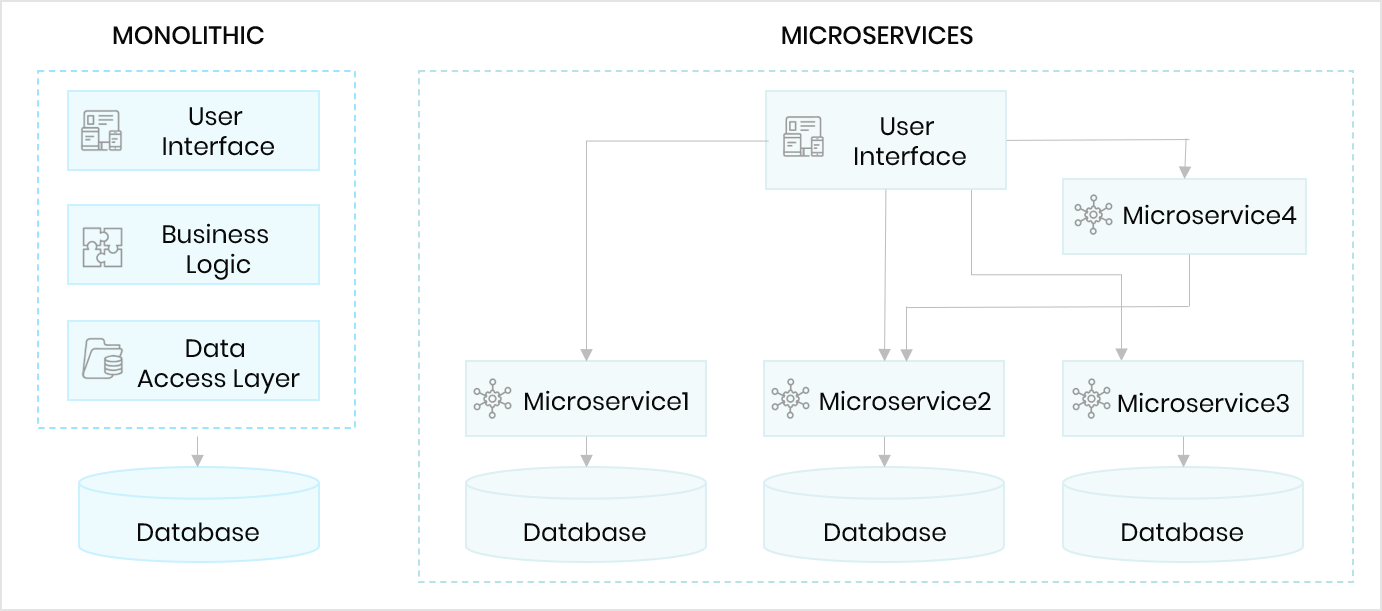A Containerized Revolution
Containerization has revolutionized how organizations develop and manage complex applications. The ability to enhance application scalability and reduce overhead has now made it the industry standard deployment over traditional monoliths.
Does this mean that everyone should adopt containerization as a software application strategy?
That depends on an organization's security, scalability, and infrastructure management requirements. In this article, our goal is to help you better understand the benefits of containerization so you can decide if implementing a container strategy is right for your business.
What is Containerization?
Containerization involves bundling an application's code, runtime, system tools, system libraries, and settings into a lightweight standalone executable package. By packaging the application and its dependencies, the app can be moved from a physical machine to a virtual machine (VM), or on the public or private cloud without risks associated with scaling traditional monolithic applications tethered to the physical machine's operating system.

Besides making the application readily portable, containers are also incredibly quick to transport. A container is often only dozens of megabytes, making it possible for the application to be launched faster and from any location.
Because of this ability, containers serve as the basis for enabling the decomposed microservices-based architecture of cloud-native applications. In other words, containerization solves the problem of how to get an entire software ecosystem to run reliably when migrating from one computing environment to another.
5 Critical Steps for AI Implementation Success
It is easy to see why containerization has become the most celebrated and heavily invested executable software technology in recent years. Containers, along with orchestration tools such as Docker, which builds and delivers containerized apps, and Kubernetes, which allows applications to be easily managed after deployment, work in unison throughout the entire software development lifecycle (SDLC) to create faster and more efficient applications.
Now that you have a better understanding of how containers help to build, deliver, and scale applications, let's take a closer look at their benefits.
Free of Geographic Limitations
Since the applications are abstracted from the host operating system, they can be launched from any device across different platforms. This makes application deployment consistent, portable, and scalable.
Also, with orchestration tools such as Kubernetes, containers can be re-deployed instantly in the event of a server crash or network outage.
No matter where the app is deployed, containers ensure the application remains consistent, resulting in increased productivity, less time troubleshooting, and more time launching and creating new features.
Scalability
As mentioned before, container technology offers a higher degree of application scalability than traditional monolithic applications. By reconfiguring legacy architecture to a microservice architecture, developers can add and change resources by adjusting the containers within the cluster. This offers the flexibility to create new updates instantly without potentially disrupting the whole application or causing downtime of other containers.
Rapid Development and Deployment
Since portable applications use the platform's source code to run, containers allow developers to modify and track the changes in the platform's source code, thereby significantly increasing productivity. Because of the size and scalability of containers, deployment time is much faster than traditional virtual machines.
For instance, the time it takes a Docker container to deploy an application can be seconds, whereas it may take a virtual machine running the same application up to days or more. Being that developers no longer need to have multiple copies of an entire OS running on a VM, the amount of CPU, memory, and storage overhead associated with virtualizing workloads is significantly reduced.
Also, with containerization, you can have blue-green deployment model, where both old and new versions can run simultaneously, enabling the users to switch to a newer version in a controlled manner.
Easy Management
Container orchestration tools such as Kubernetes facilitate the ease of application management by automating most of the repetitive work that is done by hand. Kubernetes can perform logging, troubleshooting, updates, and deploy containerized applications to a Kubernetes cluster.
Whether you need to initiate a scheduled update, restart a pod, or deploy new applications, Kubernetes offers a dashboard to manage the application from one, easy-to-use interface.
Security
Since containers can work in complete isolation from other containers, this allows the application to have a higher degree of security. For instance, if an individual container is hacked, it reduces the likelihood that the entire application will be brought down since they work independently from one another. In addition, multiple teams can work on the containers individually, keeping sensitive information from being distributed over multiple networks.
"Migration to microservices requires small teams that work with the agile methodology. If there is one large team of developers, they should be reorganized into several teams that work independently and each team should be responsible for their services using a separate build independent of the entire team."
Conclusion
By now, you should have a greater understanding of why the adoption of containerization and microservices are now at the forefront of many digital transformations. The ability to increase reliability, flexibility, and software scalability with containerization has become crucial for supplying the abstraction and virtualization necessary for application development to progress faster.
At Trianz, we can help you implement a containerization strategy, sharpen your existing IT infrastructure, and help you navigate containers and microservices so that you won't miss the boat at this stage of your digital transformation journey.
Also Read: Containerization vs. Virtualization
Experience the Trianz Difference
Trianz enables digital transformations through effective strategies and excellence in execution. Collaborating with business and technology leaders, we help formulate and execute operational strategies to achieve intended business outcomes by bringing the best of consulting, technology experiences, and execution models.
Powered by knowledge, research, and perspectives, we enable clients to transform their business ecosystems and achieve superior performance by leveraging infrastructure, cloud, analytics, digital, and security paradigms. Reach out to get in touch or learn more.

